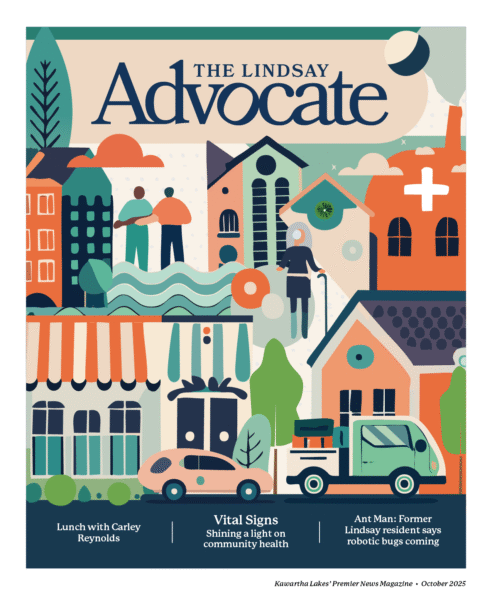That’s garbage

My mother-in-law didn’t throw out much of anything. She reused milk bags as freezer bags. Leftovers went to the compost pile. She once tried to send us home with decades-old toe rubbers (remember those?) that had belonged to my husband’s long-departed father.
I admire many of those efforts now. We aim to be conscientious recyclers and reuse what we can. We wash out food bags to give them second life, buy second-hand and recycle clothing. But we still fill our blue box and clear garbage bag every week.
Despite the best efforts of Ontario’s municipalities to divert waste, available landfill space is rapidly shrinking. And that’s despite shipping one third of our garbage to the U.S. The Auditor-General’s 2023 report warned Ontario had about 13 years of space left. Lindsay Ops, the largest of Kawartha Lakes’ five landfills, currently has about six years of life.
A decade ago, Ontario passed the Resource Recovery and Circular Economy Act. Instead of ending up in the dump, the goal was to reuse or transform materials into other products. Beer bottles were already being refilled. Aluminum cans were used to make more cans. Tires were being recycled. But the Auditor General said our current government had done little to expand those efforts.
The act introduced “extended producer responsibility” – making packaging producers responsible for collecting it. The transition to industry take-over of the blue box program should be complete by January. Ideally, it would lighten the burden on local governments and provide incentive for producers to reduce unnecessary packaging. Unfortunately, the province recently introduced significant changes to blue box regulations that would delay key recycling rates. Instead of 2026, producers have until 2031 to meet recovery goals for paper, glass, metal, plastic and beverage containers. The proposed changes also remove the requirement to collect from locations like apartment buildings and retirement homes. All these changes mean more waste in our landfills.
We have an effective deposit-return system for alcohol beverage containers – with an over 80 per cent return rate. In contrast, the blue box system captures less than half of used juice and water containers and the like. After looking at extending the deposit-return system to all beverage containers, as most other provinces have done, the Ontario government nixed the idea last year thanks to lobbying by large grocery chains.
For some areas, it’s becoming harder to recycle even alcohol bottles. Dozens of Beer Stores (Ontario’s “recycling depots”) have been shuttered since Ford allowed grocery stores and corner stores to sell booze. Fortunately, all major grocers will have to refund those empties beginning this January.
In recent years the city has increased efforts to extend the life of our landfills. We now have curbside pick-up of food waste in four urban centres, a large plastics recycling program and textiles recycling, among other efforts. The plan is to divert even more waste from landfills by recycling items like agricultural plastics, boat wrap, and rural food waste.
We can help by contacting Ontario’s finance minister () in support of a deposit-return program for all beverage containers; refusing, reusing or repairing what we can; and washing out recyclable containers to keep them out of the dump. We can also sell or donate unwanted stuff.
You never know. Maybe someone out there would want a pair of toe rubbers.






Inconvenient truth…Canadians are either in first or second place in the creation of waste (per capita) than all other countries. We don’t think about it, and if we do, we seem to be ok with it because of the blue boxes, which is now an industry. But what’s strange to me is that governments/citizens allow the downloading of the cost of disposing product waste to tax payers. We freaked out when there was a price put on pollution for green house gasses, but not this.